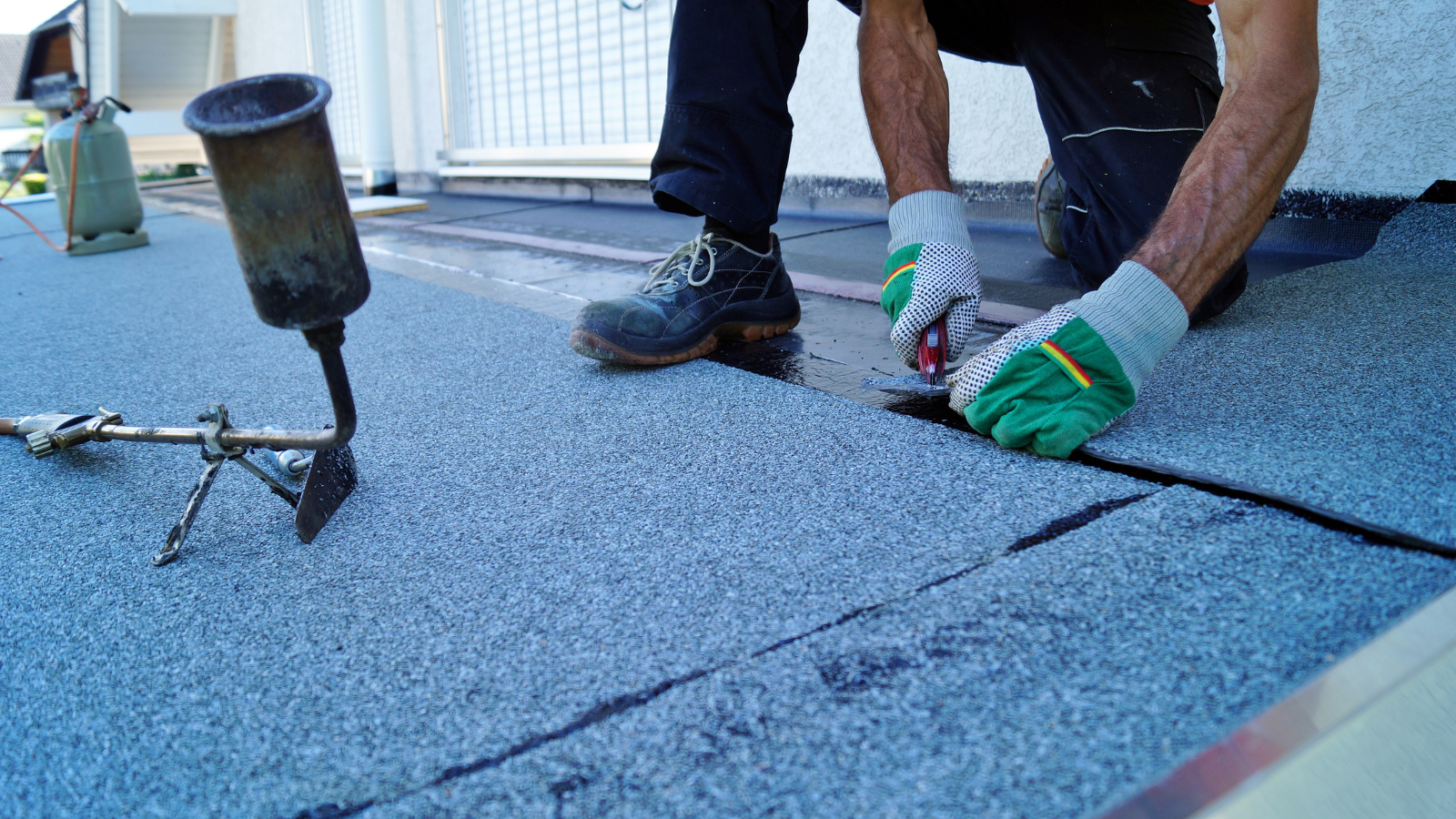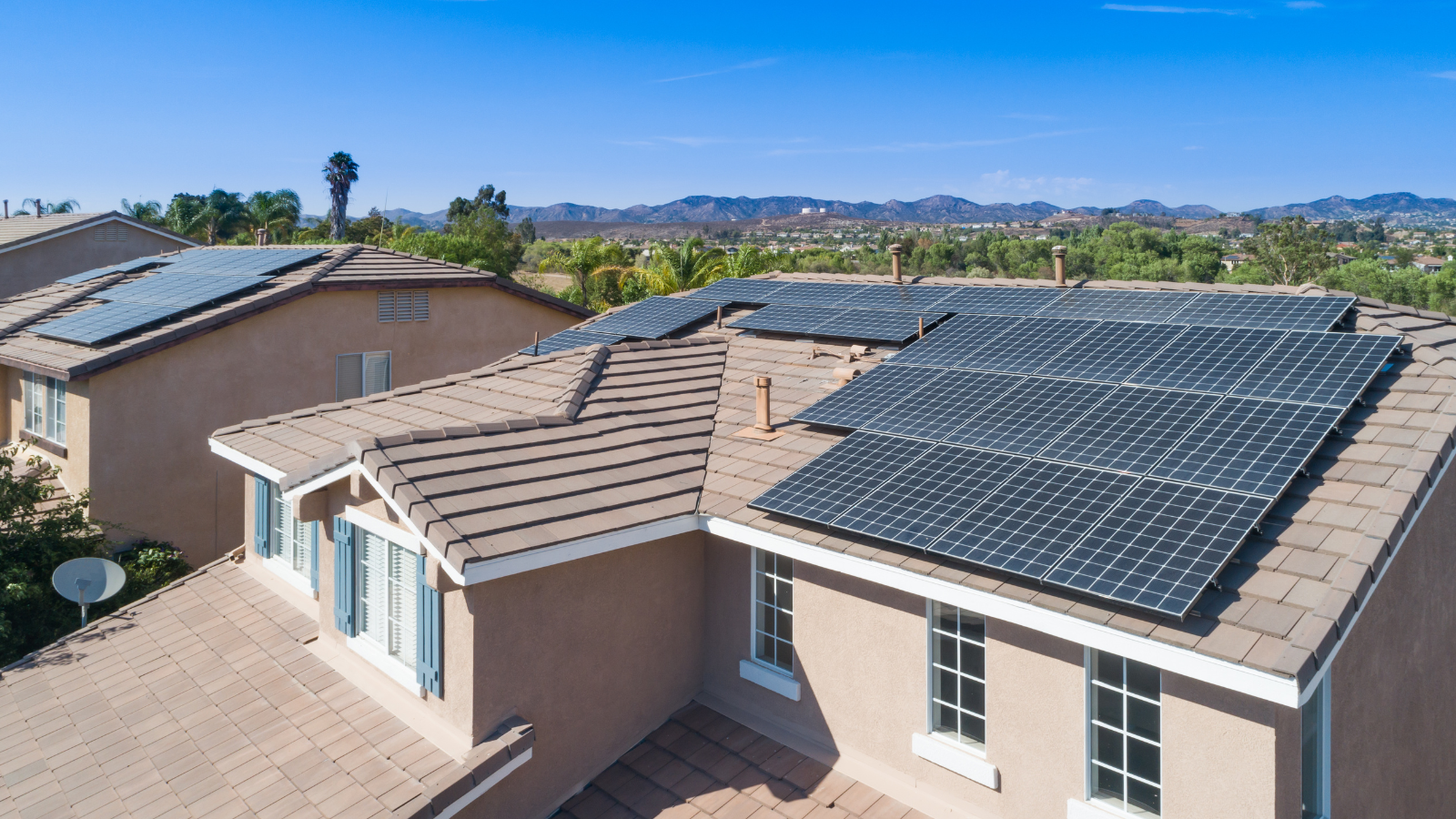Storms, formidable manifestations of nature’s power, can unleash chaos upon our lives, residences, and neighborhoods. These atmospheric events carry the ominous potential for substantial devastation, whether through the ferocity of wind or the unyielding barrage of hail. Therefore, comprehending the nature of storm damage, mastering the art of its evaluation, and navigating the necessary measures in its aftermath are paramount for homeowners. Such knowledge shields their property from harm and lays the groundwork for a seamless journey toward restoration and recovery in the wake of nature’s fury. Rely on our Wayne Roof Experts to steer you in the right direction. When your roof starts showing signs of aging and deterioration, it might be worth exploring replacement options. However, for minor storm damage, a repair could be the best course of action. Reach out to us today to arrange for an evaluation with one of our seasoned roofing professionals!
What is Storm Damage?
Storms, formidable manifestations of nature’s power, can unleash chaos upon our lives, residences, and neighborhoods. These atmospheric events carry the ominous potential for substantial devastation, whether through the ferocity of wind or the unyielding barrage of hail. Therefore, comprehending the nature of storm damage, mastering the art of its evaluation, and navigating the necessary measures in its aftermath are paramount for homeowners. Such knowledge shields their property from harm and lays the groundwork for a seamless journey toward restoration and recovery in the wake of nature’s fury.
Example of Storm Damage:
Imagine a scenario where a neighborhood finds itself in the path of a relentless thunderstorm, its dark clouds swirling ominously overhead. Within moments, the air crackles with the energy of powerful winds and the deafening percussion of hailstones pelting the earth. In the aftermath, the landscape bears witness to the havoc wrought by nature’s fury. Roofs, once sturdy bastions, now bear the scars of shingle damage and structural compromise. Fragile windows succumb to the storm’s fury, while sturdy trees are uprooted, wreaking havoc on homes, vehicles, and structures unfortunate enough to stand in their path.
Inspecting for Storm/Hail Damage and Making Insurance Claims:
After a storm passes, inspecting your property to assess any potential damage thoroughly is essential. Start by examining the exterior of your home, paying close attention to the roof, siding, windows, and surrounding landscape. Look for signs of impact, such as dented or cracked shingles, broken windows, or fallen debris.
When filing an insurance claim for storm damage, document the damage extensively with photographs or videos. Provide detailed descriptions of the affected areas and any visible signs of harm. Be sure to contact your insurance company promptly to initiate the claims process and follow their instructions closely to ensure a smooth resolution.
Emergency Roof Repairs:
Roof damage is a common consequence of severe weather, and prompt repairs are essential to prevent further deterioration and water intrusion. If you suspect roof damage after a storm, consider contacting a professional roofing contractor for a thorough inspection. Temporary measures such as tarping damaged areas can help mitigate further damage until permanent repairs can be made.
5 Steps What to Do After Storm Damage:
1. Safety First: Ensure the safety of yourself and your family before assessing damage. Watch out for hazards such as downed power lines or unstable structures.
Prioritize safety above all else in the aftermath of a storm. Proceed with caution, mindful of potential dangers lurking amidst the wreckage. Scan your surroundings for signs of danger, including fallen power lines, weakened structures, or debris strewn across pathways. Exercise extreme caution when navigating through damaged areas, and if uncertain about safety, err on the side of caution by seeking professional assistance.
2. Document the Damage: Take photographs or videos to provide evidence for insurance claims.
Capture comprehensive documentation of the storm’s impact on your property. Utilize your smartphone or camera to record both wide-angle shots and close-ups of the damage. Pay particular attention to any areas of structural compromise, visible water intrusion, or significant debris accumulation. Documenting the extent of the damage will serve as crucial evidence when filing insurance claims, ensuring a smoother and more successful process.
3. Contact Your Insurance Company: Notify your insurance provider as soon as possible and begin the claims process.
Promptly inform your insurance company of the storm damage sustained by your property. Provide detailed information regarding the incident’s date, time, and location, as well as a thorough description of the damage incurred. Be prepared to provide photographic or video evidence to support your claim. Prompt notification and cooperation with your insurance provider are essential steps in initiating the claims process and expediting the restoration of your property.
4. Schedule Inspections and Repairs: Arrange for professional inspections of your property, especially the roof, and schedule repairs promptly to prevent further damage. Engage qualified professionals to conduct thorough inspections of your property after the storm. Prioritize inspections of critical areas such as the roof, siding, windows, and foundation for signs of damage or weakness. Collaborate closely with reputable contractors to develop a comprehensive repair plan to address identified issues promptly. Timely repairs are crucial in preventing further deterioration and minimizing the risk of secondary damage to your property.
5. Stay Informed and Prepared: Keep informed about weather forecasts and take proactive measures to protect your home from future storms, such as reinforcing vulnerable areas and trimming trees near your property.
Stay vigilant and proactive in safeguarding your home against future storm-related hazards. Monitor weather forecasts regularly to stay informed about potential threats in your area. Take preemptive measures to reinforce vulnerable areas of your property, such as securing loose objects, reinforcing windows, and reinforcing roof structures. Additionally, consider trimming trees and foliage near your home to minimize the risk of damage from falling branches during storms. By staying informed and prepared, you can enhance the resilience of your property and mitigate the impact of future storms.
Conclusion:
Storm damage can be a challenging and stressful experience for homeowners, but with the right knowledge and preparation, recovery is possible. Homeowners can navigate the aftermath of severe weather by understanding what constitutes storm damage, conducting thorough inspections, making timely insurance claims, and implementing necessary repairs. Remember, prioritizing safety and taking proactive measures are key to weathering the storm and safeguarding your home for the future.






